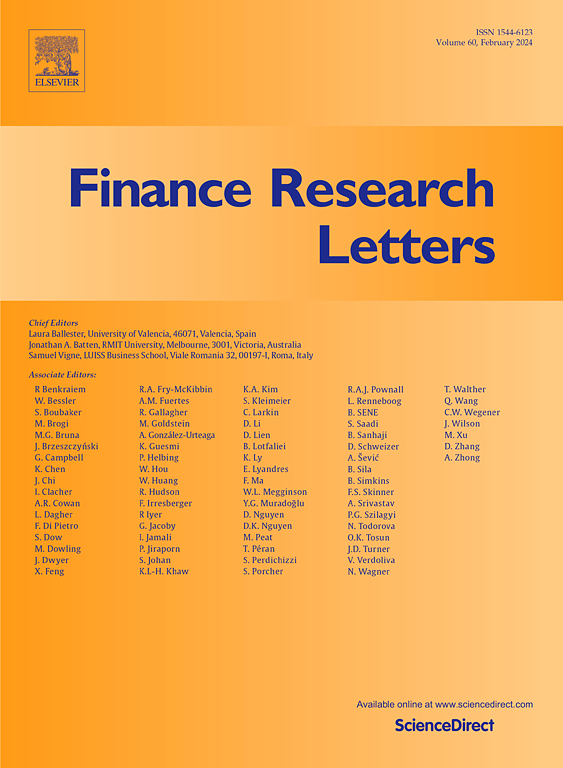房地产etf是澳大利亚年轻人拥有房产的途径
IF 6.9
2区 经济学
Q1 BUSINESS, FINANCE
引用次数: 0
摘要
我们研究了房地产交易所交易基金(etf)作为澳大利亚年轻人的另一种投资渠道的可行性,这些年轻人在直接拥有房产方面面临持续的负担能力障碍。利用混合数据抽样(MIDAS)框架,我们估计了上市房地产etf的滞后月度回报与澳大利亚主要首府城市季度房价变动之间的动态联系。该分析纳入了6只etf,其中2只在国内上市(股票代码:VAP和MVA), 4只在美国上市(IYR、REZ、RWR和VNQ),从而对国内和国际风险敞口进行了跨市场比较。采用从一般到特定的建模方法来隔离ETF价格变动对住宅房地产回报的统计稳健的短期和长期影响。实证结果揭示了显著的滞后关系,悉尼、墨尔本和布里斯班的季度房价对美国etf(尤其是REZ、VNQ和iyear)的积极走势反应最为强烈,滞后时间从1个月到4个月不等。这些发现突出了全球上市房地产市场在塑造国内房地产动态方面的信息内容和信号价值。对于由于高存款要求和紧缩的信贷条件而无法获得传统住房所有权的年轻澳大利亚人来说,房地产etf提供了一个明确而实用的选择-提供低成本,流动性和多元化的房地产市场敞口,能够投资任何金额,无论金额有多小。本文章由计算机程序翻译,如有差异,请以英文原文为准。
Real estate ETFs as a pathway to property ownership for young Australians
We examine the viability of real estate exchange-traded funds (ETFs) as an alternative investment conduit for young Australians who face persistent affordability barriers to direct property ownership. Drawing on a Mixed Data Sampling (MIDAS) framework, we estimate the dynamic linkages between lagged monthly returns of listed real estate ETFs and quarterly house price movements across Australia’s major capital cities. The analysis incorporates six ETFs—two domestically listed (ticker codes: VAP and MVA) and four based in the U.S (IYR, REZ, RWR, and VNQ)—enabling a cross-market comparison of both domestic and international exposures. A general-to-specific modelling approach is employed to isolate statistically robust short- and long-run effects of ETF price movements on residential property returns. The empirical results reveal significant lagged relationships, as quarterly house prices in Sydney, Melbourne, and Brisbane respond most strongly to positive movements in U.S. ETFs—especially REZ, VNQ, and IYR—with lags ranging from one to four months. These findings highlight the informational content and signalling value of global listed real estate markets in shaping domestic housing dynamics. For younger Australians unable to access traditional homeownership due to high deposit requirements and tightening credit conditions, real estate ETFs offer a clear and practical alternative—providing low-cost, liquid, and diversified exposure to the property market, with the ability to invest any amount, no matter how small.
求助全文
通过发布文献求助,成功后即可免费获取论文全文。
去求助
来源期刊

Finance Research Letters
BUSINESS, FINANCE-
CiteScore
11.10
自引率
14.40%
发文量
863
期刊介绍:
Finance Research Letters welcomes submissions across all areas of finance, aiming for rapid publication of significant new findings. The journal particularly encourages papers that provide insight into the replicability of established results, examine the cross-national applicability of previous findings, challenge existing methodologies, or demonstrate methodological contingencies.
Papers are invited in the following areas:
Actuarial studies
Alternative investments
Asset Pricing
Bankruptcy and liquidation
Banks and other Depository Institutions
Behavioral and experimental finance
Bibliometric and Scientometric studies of finance
Capital budgeting and corporate investment
Capital markets and accounting
Capital structure and payout policy
Commodities
Contagion, crises and interdependence
Corporate governance
Credit and fixed income markets and instruments
Derivatives
Emerging markets
Energy Finance and Energy Markets
Financial Econometrics
Financial History
Financial intermediation and money markets
Financial markets and marketplaces
Financial Mathematics and Econophysics
Financial Regulation and Law
Forecasting
Frontier market studies
International Finance
Market efficiency, event studies
Mergers, acquisitions and the market for corporate control
Micro Finance Institutions
Microstructure
Non-bank Financial Institutions
Personal Finance
Portfolio choice and investing
Real estate finance and investing
Risk
SME, Family and Entrepreneurial Finance
 求助内容:
求助内容: 应助结果提醒方式:
应助结果提醒方式:


